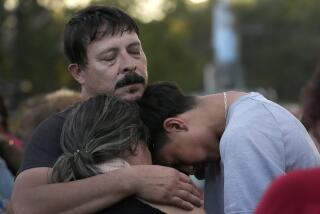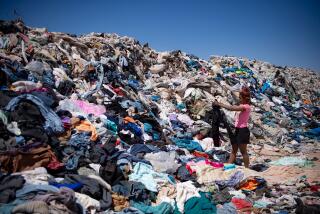Dying for the shirt on your back
The deaths of more than 600 garment workers in Bangladesh’s Rana Plaza factory collapse April 24 is a tragedy that highlights widespread problems in the global apparel industry. But will it be the spark that finally leads to much-needed global reforms?
After disasters like Rana, or the fire at another Bangladeshi garment factory in November that killed 112 people, there is a tendency to play detective, to focus on the culprit, whether it be the owner, corruption or lax laws and missing enforcement. News article after news article focuses on finding the smoking gun, as if there were only one cause and as if minus that cause, those workers would be safe today. Or coverage treats these tragedies as natural disasters with a rush of charity before public attention turns to the next event.
Yes, we seek justice. But in our rush to solve the case or help the victims, we refuse to see the real culprits: the global apparel industry and ourselves for being complicit in supporting or ignoring a system of trade and offshoring largely designed to bypass regulatory policy of every stripe, while putting maximum profit before people.
According to Boston College sociology professor Juliet Schor, the cost of apparel in real dollars has fallen 39% since 1994. We need to ask ourselves, to what extent is our demand for a $5 T-shirt or deep discounts on jeans responsible for disasters like this?
The Rana disaster has been compared to the 1911 Triangle Shirtwaist factory fire in New York City. Both were at garment factories, and both resulted in many deaths (146 in Triangle). The Triangle fire has remained in our collective memories and has become a stand-in for the terrible problems of an industrializing nation. We remember it not because of the deaths — as workers sadly died regularly in American industry — but because we were made to confront it. Garment workers refused to silently go back to work. Their massive protests and collective anger forced middle-class consumers to see their own culpability, and together they sought political change.
This change brought new safety and health codes, labor law reforms and modern regulations to an often primitive industry. What started as reforms for garment workers ended as reforms for all workers in New York and made the state a model for the nation. The simple fact that all of this was the result of workers exercising their rights gets missed in the telling of the Triangle story, as too much attention is paid to chained doors or building code violations, some of which is or becomes urban myth and deflects from the truth.
Of course we cannot ignore the building or business owner’s responsibility or that of local officials. But if that is all we focus on, we delude ourselves about the real issues. The industry is in many ways unchanged from 1911. It is still fiercely competitive, with razor-slim margins. It is still dominated by a subcontracting system. Today, large retailers and labels contract production to manufacturers because they own no facilities themselves. These contractors then subcontract to others, shaving a little off the top as their margin.
The distance between the label and those making the garment is great and often unknown, cloaked in layers. Each layer lives on the ability to hire cheaper and cheaper labor to make its margin. The locations of these factories have changed, but the system remains. Our clothes come from places like Rana, where the average worker is, as in 1911, a young girl working in terrible conditions for starvation wages.
Shortly after the Triangle fire, at a memorial gathering, union activist Rose Schneiderman rose to address the mostly middle-class crowd. Her words should strike a chord today: “Every week I must learn of the untimely death of one of my sister workers. Every year thousands of us are maimed. The life of men and women is so cheap and property is so sacred. There are so many of us for one job, it matters little if 146 of us are burned to death. We have tried you citizens; we are trying you now, and you have a couple of dollars for the sorrowing mothers, brothers and sisters by way of a charity gift. But every time the workers come out in the only way they know to protest against conditions which are unbearable, the strong hand of the law is allowed to press down heavily upon us.”
Rana should be our global Triangle fire moment. It should force us to wake up and as consumers support the workers who make our clothes. It is our moral responsibility to demand that the labels we wear not be stitched in blood. To do nothing, to simply wait for the next tragedy, is to remain guilty as charged by Schneiderman in 1911.
Richard A. Greenwald, a professor of history and dean at St. Joseph’s College in New York, is the author of “Labor Rising: The Past and Future of Working People in America.” Michael Hirsch is a journalist and co-producer of the HBO documentary “Triangle: Remembering the Fire.”
More to Read
A cure for the common opinion
Get thought-provoking perspectives with our weekly newsletter.
You may occasionally receive promotional content from the Los Angeles Times.










